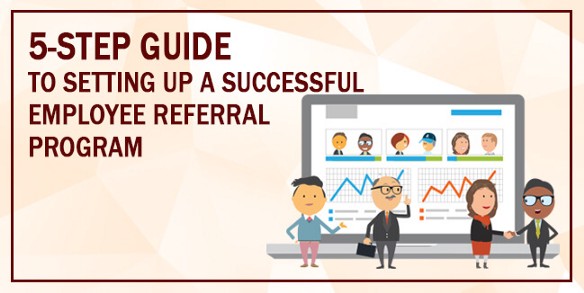Do you have a job opening you need to fill? Are you looking to hire a great employee who would be the perfect fit for the company? Maybe LinkedIn or job boards are the first places you think of when it comes to promoting your job opening. However, I’d want to suggest another, more effective, and affordable alternative: an employee referral program!
Why employee referrals? Because they’re a super powerful tool for hiring and retaining employees. By setting up a referral program, your current employees can become your best recruiters and bring in the most skilled and exceptional people to your company.
Do you want to hear something even more amazing? Employee referral programs can be a fantastic way to improve your time and quality of hire. So, if you’re planning on setting up your first employee referral program or are on the lookout for ideas to refine your existing program, this blog article is for you. ?
Determine Your Priorities and Goals
Yes, employee referral programs are great, but without pre-defining your goals and priorities, you’re set for a disaster. The foundation of any effective employee referral program is understanding your hiring needs and available resources.
If you have enough funds to launch an employee referral program for all positions, that’s amazing! If not, consider setting up a referral program for the following situations:
- When you want to fill a job vacancy quickly.
- When you’re having a hard time filling a job opening through job boards.
- When you have an open senior role that’s challenging to fill.
- When you need to hire for a niche position.
What’s more, if you want to get better results, you’ll need to make your goals more specific. Here are a few examples of how specific and measurable goals look like:
- Reduce the company’s time to hire for X days in the X period.
- Reduce the company’s cost per hire for X% in the X period.
- Reduce the company’s turnover rate by X% in the X period.
- Get X% more skilled job applicants.
Additional Reading: 9 Recruitment Books to Add to Your Reading List in 2019
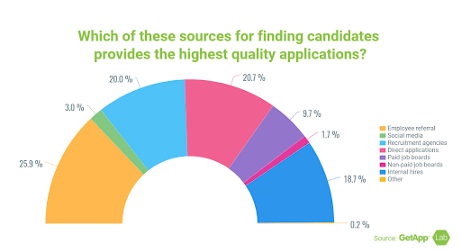
Make Referrals Easy
Once you define your priorities and goals, it’s time to work on your referrals system. The golden rule here is to create a program that will be user-friendly, and fast, and easy to use. You don’t want to ask your employees to submit piles of documentation or send a dozen emails. You’ll risk driving referrers away.
Here are some tips for engaging your employees to help you fill your company with best-of-the-class talent:
- The easiest-case scenario is to ask your employees to give the recruiters a name and some way to contact the referred candidate.
- Use referral software. Modern Applicant Tracking Systems are a great choice as they have built-in employee referral programs. You can easily use the software to send your employees referral emails. They will receive the email with a sharable link so they can share the job on their social media profiles.
- Remind your employees about the open positions and the rewards you’re offering. Create a Slack channel where you’ll share reminders.
Additional Reading: Best HR Conferences To Attend In 2019
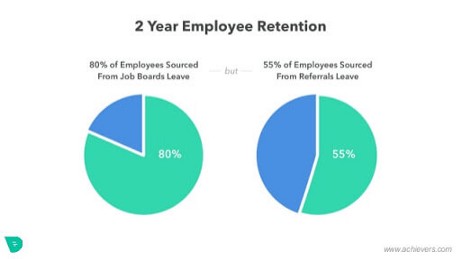
Offer Your Employees a Referral Bonus
What’s the best way to motivate and engage your current employees to be active with the referral program? Well, according to research, the majority of companies are doing that through cash prizes.
If you decide on using money as an incentive, go for a tiered system. Give higher rewards to employees who help you fill more difficult positions or senior roles. Offer more if their referred candidates get hired or stay at your company for at least six months.
Here are a few other good ideas for sparking an interest with your employees:
- Offer some time off. Nearly 15% of companies offer time off as an alternative to cash rewards.
- Social employee referral bonus. This type of bonus is perfect for employees who want to be seen as a valuable colleague. Consider giving them a public thank you.
- Altruistic employee referral bonus. This type of bonus is perfect for employees who want to help other people, friends, or society. Consider giving a donation on your employees’ behalf to their favorite charity.
- Trips. Google discovered that giving its employees trips is more effective than offering them a $1M employee referral cash bonuses.
Additional Reading: 7 Ways to Improve Communication Skills in the Workplace
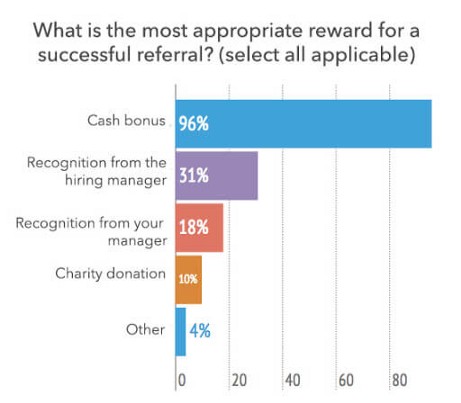
Source: Liam Walsh
Track Metrics
There’s no point in setting up an employee referral program if you don’t measure its success over time. After all, you’d want to know whether traditional recruitment is a better option for your company than a referral program. What’s more, analyzing your program will also help you detect best practices and roadblocks.
Some good metrics to track are:
- Referral to Hire Rate. This metric measures how many referrals were hired in your company during a specific period of time. For example, let’s say that in 12 months, you hired 10 employees out of 35 referrals. Take the total number of referrals you received and divide it by the number of referrals that your company hired. Multiply the number by 100.
- Tenure of Referrals. Use this metric to calculate how long a referral stays with your company. Calculating the metric is pretty straightforward. You just need to calculate the length of time between when the referral started working and when they left the company.
- Average Time to Fill: Referrals vs Non-referrals. Calculating this metric is advisable if you want to know which type of recruitment is more effective at your company. Simply calculate the total number of days from when each position was open to when a referred employee accepted an offer. Let’s say that in one year, you hired three referred employees, with 20, 30, and 40 days time to fill respectively. Your average time to fill is 20+30+40/3=30 days. Once you calculate the average time to fill for positions filled by referrals, compare it against the average time to fill for positions not filled by referrals.
Additional Reading: 5 Effective Ways to Assess Organizational Fit
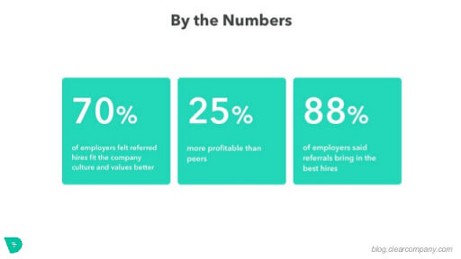
Don’t Forget to Be Creative
Here’s how big companies like Google and Booking.com hire their high-quality talent:
- Salesforce organizes Recruitment Happy Hours. It’s a meetup event where the team members can invite the friends they want to refer. How incredible is their idea?
- When Booking.com had a hard time filling a role with someone who spoke both Portuguese and English, they came up with a brilliant solution. The recruitment team brought in Portuguese food for lunch for the entire office and gave them a note to refer someone they know for the job opening!
- When recruiters in Google need to hire for a senior role, they sit down with employees and ask them: “Who’s the best sales manager you worked with?”, or, “Who do you think is the best finance manager?” These types of questions motivate people to think harder.
Additional Reading: 5 Steps to Setting Professional Development Goals For Managers
Conclusion
Although an employee referral program might sound like a lot of work, it can’t hurt your company if you give it a try. Chances are, it’ll be well worth your time and money. By following the tips mentioned above, you’ll manage to set up an amazing employee referral program that will lead to:
- More high-quality candidates working at your company.
- Faster time to fill and time to hire.
- Hires who stay with your company longer.
- Hires who are a great fit for your company.
Hopefully, my 5-step guide will inspire you and help you come up with great ideas for your own employee referral program and rewards. Good luck!


